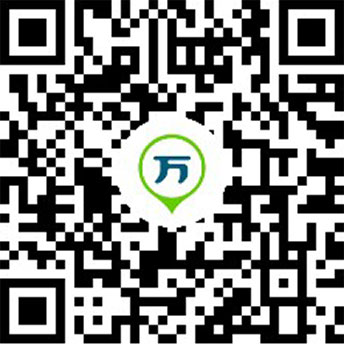Scientists have known for more than two decades that cancer is a disease of the genes. Something scrambles the Dna inside a nucleus, and suddenly, instead of dividing in a measured fashion, a cell begins to copy itself furiously. Unlike an ordinary cell, it never stops. But describing the process isn't the same as figuring it out. Cancer cells are so radically different from normal ones that it's almost impossible to untangle the sequence of events that made them that way. So for years researchers have been attacking the problem by taking normal cells and trying to determine what changes will turn them cancerous——always without success.
Until now. According to a report in the current issue of Nature, a team of scientists based at M.I.T.'s Whitehead Institute for Biomedical Research has finally managed to make human cells malignant——a feat they accomplished with two different cell types by inserting just three altered genes into their DNA. While these manipulations were done only in lab dishes and won't lead to any immediate treatment, they appear to be a crucial step in understanding the disease. This is a “landmark paper,” wrote Jonathan Weitzman and Moshe Yaniv of the Pasteur Institute in Paris, in an accompanying commentary.
The dramatic new result traces back to a breakthrough in 1983, when the Whitehead's Robert Weinberg and colleagues showed that mouse cells would become cancerous when spiked with two altered genes. But when they tried such alterations on human cells, they didn't work. Since then, scientists have learned that mouse cells differ from human cells in an important respect: they have higher levels of an enzyme called telomerase. That enzyme keeps caplike structures called telomeres on the ends of chromosomes from getting shorter with each round of cell division. Such shortening is part of a cell's aging process, and since cancer cells keep dividing forever, the Whitehead group reasoned that making human cells more mouselike might also make them cancerous.
The strategy worked. The scientists took connective-tissue and kidney cells and introduced three mutated genes——one that makes cells divide rapidly; another that disables two substances meant to rein in excessive division; and a third that promotes the production of telomerase, which made the cells essentially immortal. They'd created a tumor in a test tube. “Some people believed that telomerase wasn't that important,” says the Whitehead's William Hahn, the study's lead author. “This allows us to say with some certainty that it is.”
Understanding cancer cells in the lab isn't the same as understanding how it behaves in a living body, of course. But by teasing out the key differences between normal and malignant cells, doctors may someday be able to design tests to pick up cancer in its earliest stages. The finding could also lead to drugs tailored to attack specific types of cancer, thereby lessening our dependence on tissue-destroying chemotherapy and radiation. Beyond that, the Whitehead research suggests that this stubbornly complex disease may have a simple origin, and the identification of that origin may turn out to be the most important step of all.
注(1):本文選自Time; 08/09/99, p60, 3/5p, 2c
注(2):本文習題命題模仿對象2002年真題text 4
1. From the first paragraph, we learn that ________________.
[A] scientists had understood what happened to normal cells that made them behave strangely
[B] when a cell begins to copy itself without stopping, it becomes cancerous
[C] normal cells do no copy themselves
[D] the DNA inside a nucleus divides regularly
2. Which of the following statements is true according to the text?
[A] The scientists traced the source of cancers by figuring out their DNA order.
[B] A treatment to cancers will be available within a year or two.
[C] The finding paves way for tackling cancer.
[D] The scientists successfully turned cancerous cells into healthy cells.
3. According to the author, one of the problems in previous cancer research is ________.
[A] enzyme kept telomeres from getting shorter
[B] scientists didn‘t know there existed different levels of telomerase between mouse cells and human cells
[C] scientists failed to understand the connection between a cell‘s aging process and cell division.
[D] human cells are mouselike
4. Which of the following best defines the word “tailored” (Line 4, Paragraph 5)?
[A] made specifically
[B] used mainly
[C] targeted
[D] aimed
5. The Whitehead research will probably result in ___________.
[A] a thorough understanding of the disease
[B] beating out cancers
[C] solving the cancer mystery
[D] drugs that leave patients less painful
答案:B C B A D
編輯推薦:
·2021年考研真題及答案解析專題 (2020-12-27)
·2021年考研真題及答案解析專題 (2020-12-27)
·2021考研英語完型填空暑期練習題及答案匯總 (2020-6-24 19:35:21)
·2021考研英語完型填空暑期練習題及答案(6) (2020-6-24 19:34:08)
·2021考研英語完型填空暑期練習題及答案(5) (2020-6-24 19:33:05)
·免費真題 ·模考試題


- 1
- 2
- 3
- 4
- 5
- 6
- 7
- 8
- 9
- 10
| · | 2022考研復試聯系導師有哪些注意事 | 04-28 |
| · | 2022考研復試面試常見問題 | 04-28 |
| · | 2022年考研復試面試回答提問方法有 | 04-28 |
| · | 2022考研復試怎么緩解緩解焦慮心態 | 04-27 |
| · | 2022年考研復試的訣竅介紹 | 04-27 |
| · | 2022年考研復試英語如何準備 | 04-26 |
| · | 2022年考研復試英語口語常見句式 | 04-26 |
| · | 2022年考研復試的四個細節 | 04-26 |
| · | 2022考研復試準備:與導師及時交流 | 04-26 |
| · | 2022考研復試面試的綜合技巧 | 04-26 |

實用文檔 | 入黨資料 | 入黨申請書 | 入黨志愿書 | 個人自傳 | 轉正申請書 | 思想匯報 | 個人簡歷 | 簡歷模板 | 簡歷封面 | 工作計劃 | 工作總結 | 自我評測
個性評測 | 社交評測 | 事業評測 | 運勢評測 | 報告 | 實習報告 | 工作總結 | 社會實踐 | 心得體會 | 述職報告 | 調查報告 | 辭職報告
法律文書 | 合同范本 | 演講范文 | 更多>>
英語學習 | 聽力口語 | 閱讀寫作 | 翻譯文化 | 趣味英語 | 學習方法 | 英文經典歌曲 | 每日課堂 | 空中英語 | 少兒英語 | 影視英語 | 英文歌曲 | 更多>>
作文大全 | 作文 | 小學 | 初中 | 高中 | 話題作文 | 考研 | 四六級 趣味作文 | 體裁作文 | 記敘文 | 議論文 說明文 | 應用文 | 讀后感 | 作文素材 | 名言警句
優美段落 | 哲理故事 | 詩詞賞析 | 成語知識 | 技巧 | 寫作指導 | 作文點評 | 佳文賞析 | 寫作基礎 | 話題演練 | 作文教學 | 更多>>


